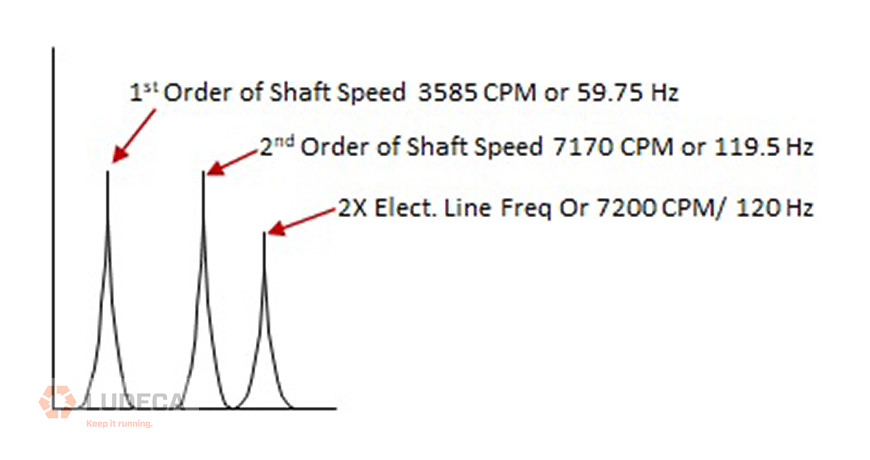
Frequency can be defined as how often an event occurs per unit of time. A vibration spectrum is displayed as a horizontal and vertical plot (X and Y). The horizontal (X) axis is the frequency axis and shows a representation of how often an event occurs. Typically, the vibration analyst may use multiple units of reference for the frequency axis when doing vibration analysis. The most common units used for the spectrum (FFT) are cycles per minute (CPM) and Hertz. The least known unit for the spectrum frequency axis is “Orders” or multiples of shaft turning speed. It is critical to understand the differences in the frequency units (Hz, CPM, and Orders). It can be advantageous to view data in different units depending upon the machine and the problem being analyzed.
Orders are ratios of frequencies to multiples of a shaft turning speed. For example, a 60 Hz motor turning 1780 RPM would also have a rotational speed of 29.66 Hz. The rotational speed would be referenced as one (1) order. Two (2) orders would be twice the shaft turning speed (59.33 Hz) and so on.
Certain equipment defects occur based on multiple of turning speeds. Looking at data based upon order references can make it easier to remember the specific defect frequencies and identify them during routine analysis.
An order-based analysis is a good way to set up and ensure that the correct frequency range is being monitored for variable speed machines, etc. You can define your analysis setups in order and be ensured that the correct frequency ranges will be measured by your vibration data collector as the speed of the machine changes over time.
Most modern vibration analysis software and vibration data collectors support order-based data collection and analysis. If you are unsure, then you should consult the provider of your vibration software and hardware and find out.
Watch our video Vibration Analysis Know-How: Understanding Resonance for a quick introduction to resonance and natural frequencies.
Case Study: Eliminating High Vibration Due to Natural Frequency
Filed under:
Vibration Analysis by Gary James CRL
